
Understanding Vata Pitta Kapha Gynoveda
In Ayurveda, the most basic building blocks of the material world are the five elements: ether (space), air (wind), fire, water, and earth. Vata is characterized by the mobile nature of Wind (Air) energy. Pitta embodies the transformative nature of Fire energy. And Kapha reflects the binding nature of Water energy.

Three Doshas In Ayurveda Ayurveda, Maharishi ayurveda, Natural healing
These elements make up Ayurveda's three energies, or doshas: Vata: This is a combination of space and air. People with the vata dosha are creative and active, but tire easily. Pitta: This is a.
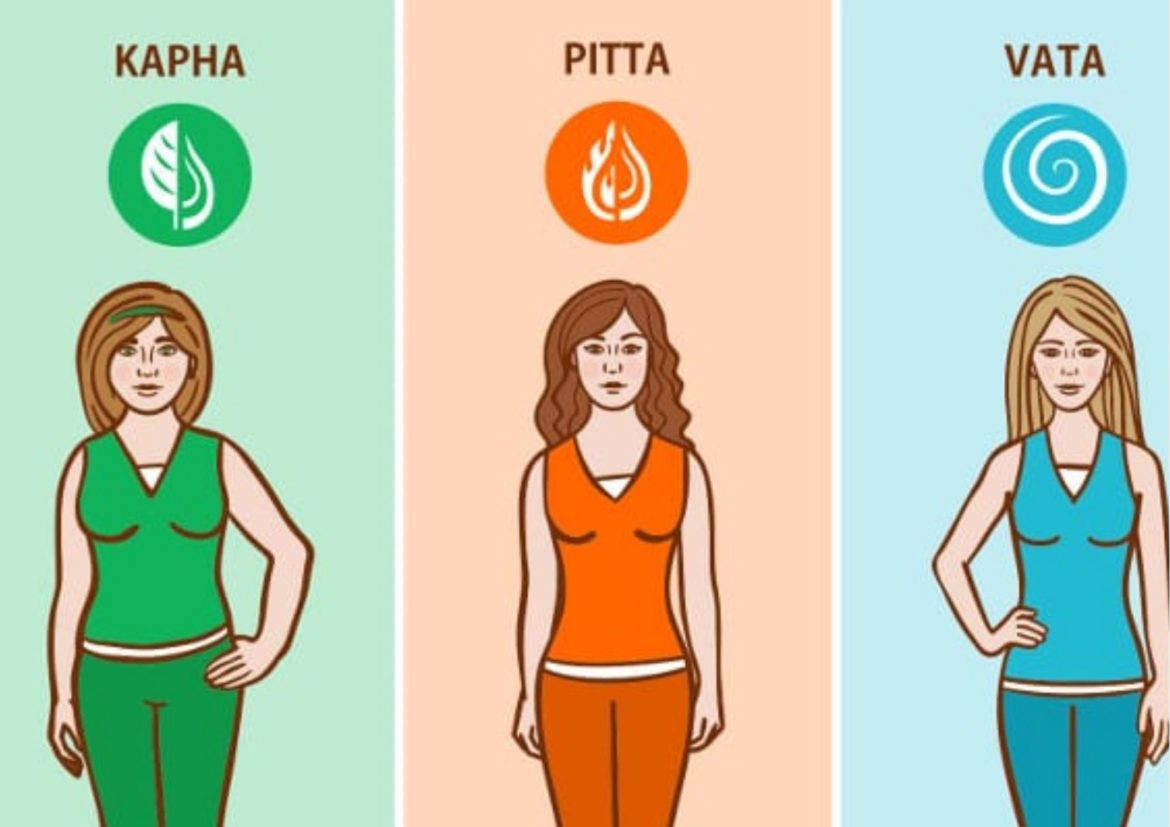
Do you know your body type (VataPittaKapha)? littlelioness
Dosha (Sanskrit: दोषः, IAST: doṣa) is a central term in Ayurveda originating from Sanskrit, which can be translated as "that which can cause problems" (literally meaning "fault" or "defect"), and which refers to three categories or types of substances that are believed to be present conceptually in a person's body and mind.These Dosha are assigned specific qualities and functions.
The Three Doshas according to Ayurveda Vata, Kapha, Pitta; what body type are you? Health
According to the philosophy, universal life force manifests as three different energies, or doshas, known as vata, pitta, and kapha. We're all made up of a unique combination of these three forces. Though everyone has some of each, most people tend to have an abundance of one or two of the doshas. This unique combination is determined at the.
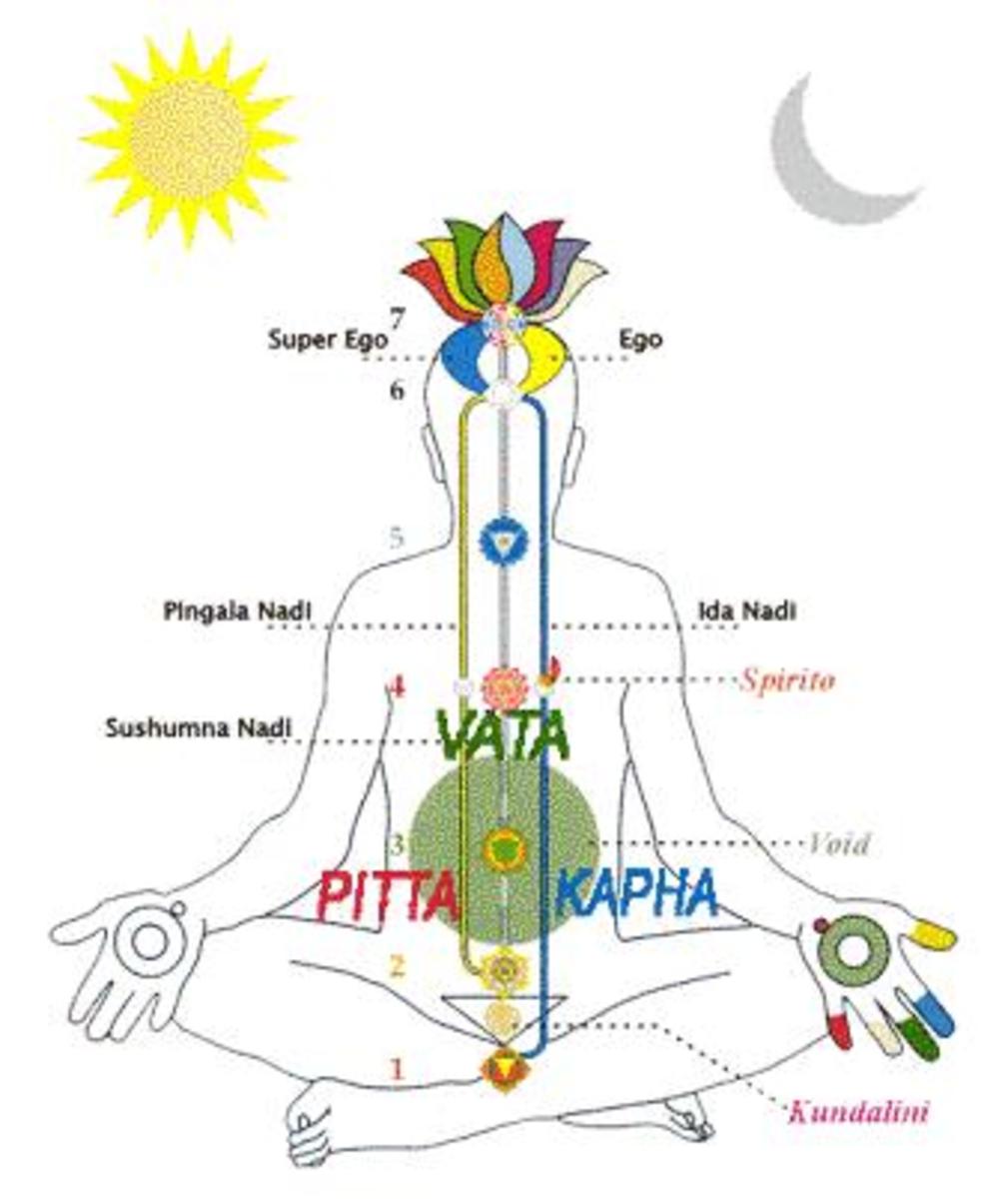
Ayurveda's Three Doshas Vata, Pitta and Kapha HubPages
Ayurveda sees all of creation as being made of five basic elements: earth, water, fire, air, and space. These elements condense and combine into what are known as the doshas, or elemental energies. Earth and water create the kapha dosha, water and fire make up the pitta dosha, and air and space merge to create the vata dosha.

What is vata, pitta and kapha meaning? And what are the vata, pitta and kapha characteristics
Ayurveda uses nature's elements to identify our human form and existence. Every person is made up of 5 of the elements of nature. These are ether, air, fire, water and earth. The doshas are formed from a blend of these elements. And finally the 3 doshas Vata, Pitta, and Kapha make up an individual's physical body - in different quantities.
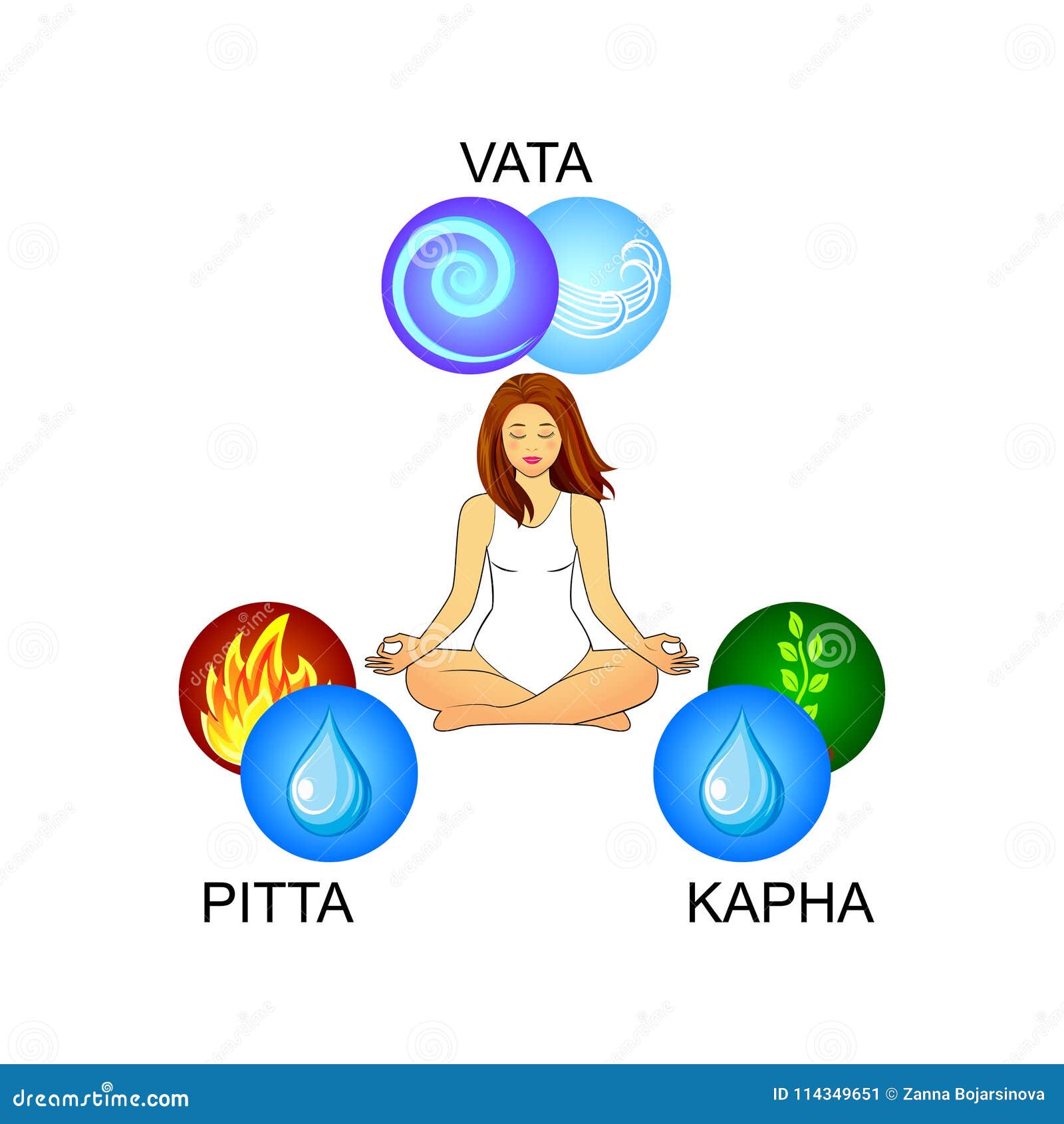
Ayurvedadoshas Vata, Pitta, Kapha Vektor Abbildung Illustration von medizin, massage 114349651
Qualities of Vata Dosha are - dryness, Laghu - Lightness, Sheeta - coldness, Khara - roughness, Sookshma - minuteness, Chala - movement. Dryness - Any symptom in the body, that is associated with dryness is influenced by Vata. For example - Dry skin. Dry and cracked foot, Dry eye syndrome, dry lips etc.
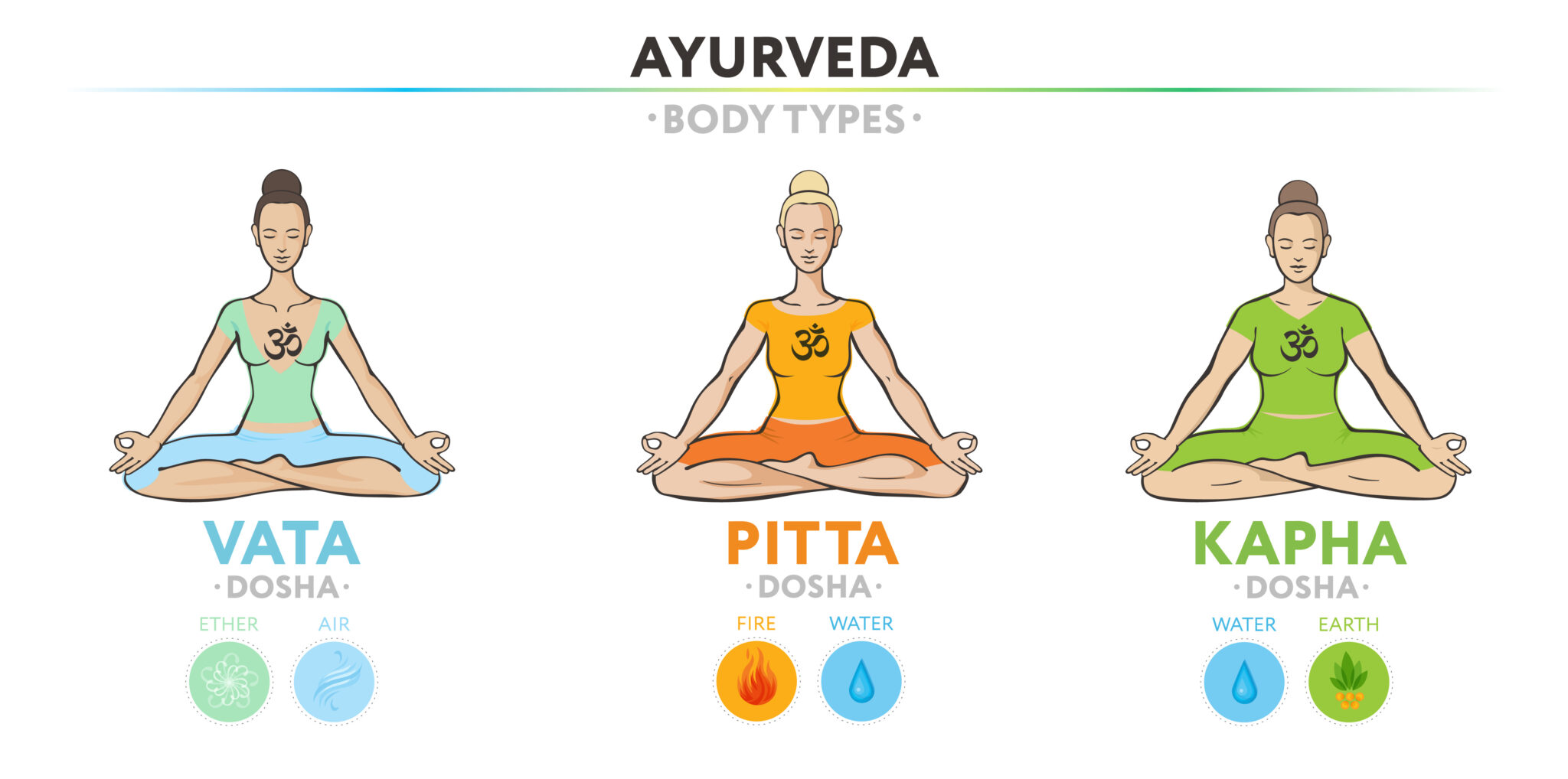
Vata, pitta, and kapha doshas. Ectomorph, mesomorph and endomorph. Ayurvedic physical
Vata Pitta Kapha is the three Ayurvedic principles or body types known as doshas. These three doshas are a foundational concept in Ayurveda, an ancient Indian medicine system that has been around since the 2nd century BC. Knowing about Vata, Pitta, and Kapha is vital for anyone who wants good health and well-being. By learning how to balance.

vatapittakapha terapias orientales Pinterest Pitta, Ayurvedic diet and Ayurveda
These elements combine to form the energies called Doshas. Three Doshas exist in the human bodies which are collectively called Tridoshas. The dominance of Dosha occurs at the time of conception. The composition of Doshas is accordingly: Vata Dosha - Air + Space. Pitta Dosha -Fire + Water. Kapha Dosha - Earth + Water.

Ayurveda The Ancient Indian Health Science ⋆ SEANOVISTA
Ayurveda and doshas. Ayurvedic medicine is based on the idea that the world is made up of five elements — aakash (space), jala (water), prithvi (earth), teja (fire), and vayu (air) ( 2, 3 ). A.
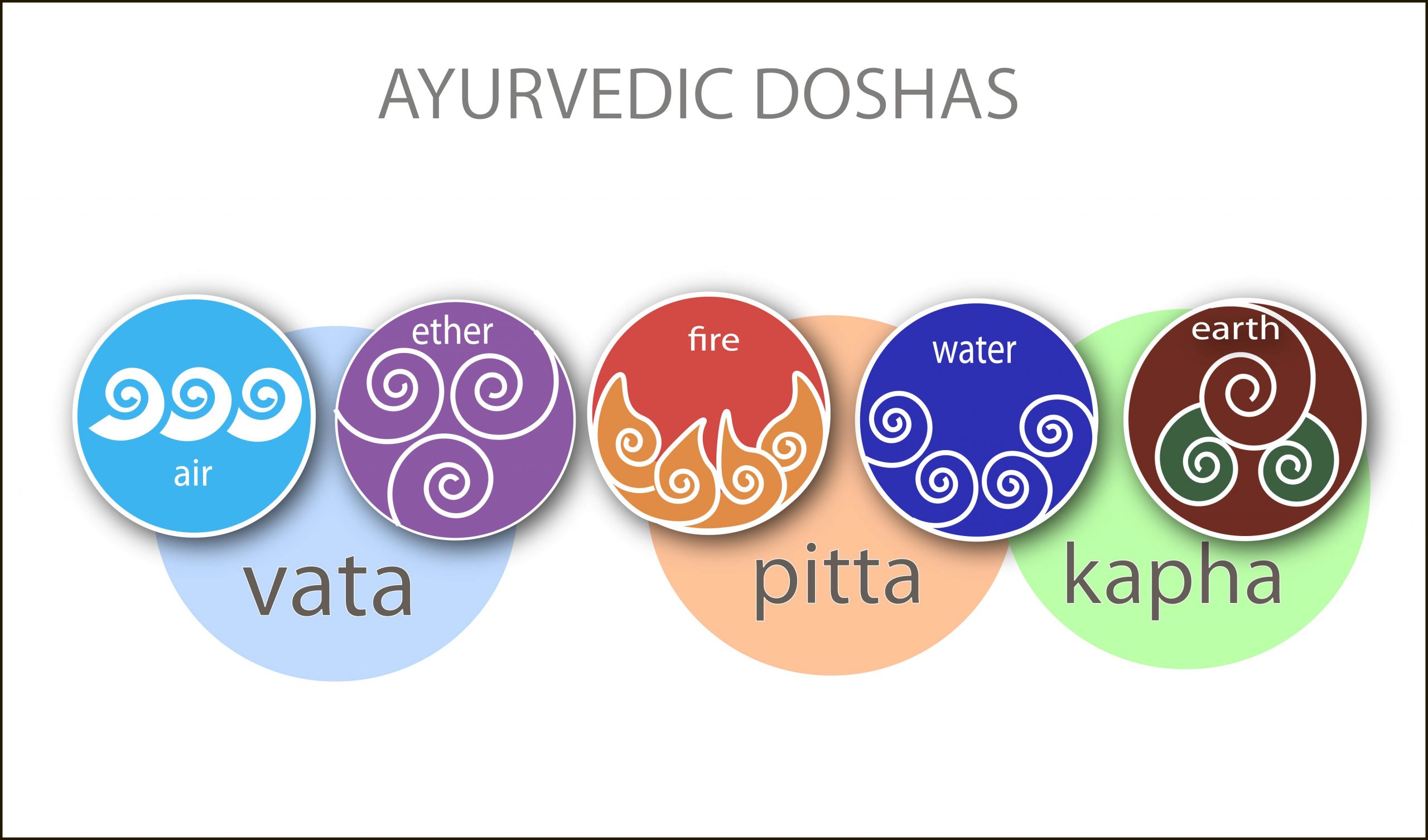
VATA, KAPHA, AND PITTA DOSHAS IN AYURVEDA EXPLAINED
Additional Information on Vata, Pitta and Kapha Doshas. An overview of the doshas plus a more detailed analysis - including possible disease mechanisms for: Vata, Pitta and Kapha on the 'Healthy Ayurveda' website. Further explanations of Vata, Pitta and Kapha and their qualities (external link). Additional Information on Ayurveda. Introduction to Ayurveda.

The Three Ayurvedic Doshas Vata, Pitta and Kapha Design via ekamyogashala ayurveda tridosha
Doshas. According to Ayurveda, universal life force manifests as three different energies, or doshas, known as vata, pitta, and kapha. Learn more about each dosha, how to recognize and fix an imbalance in your constitution, and how your dominant dosha can affect your mood, physical health, and behavior. Ayurveda.
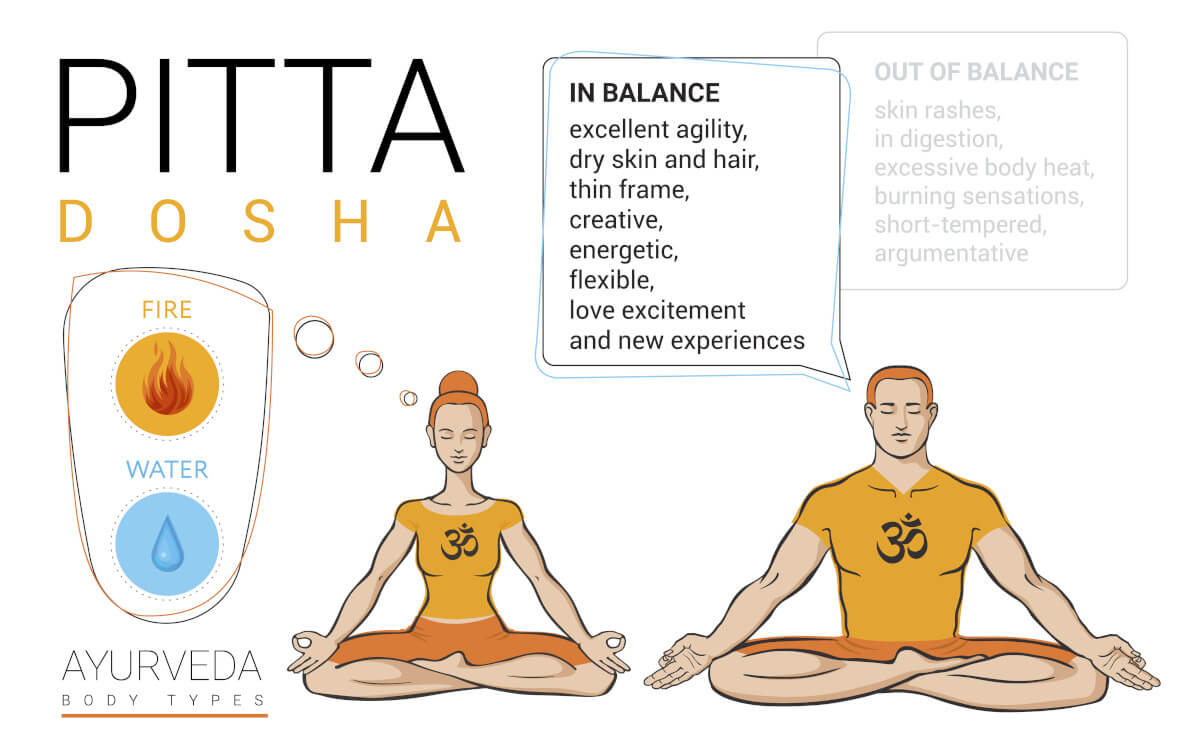
Ayurveda Beginners guide Pitta Vata Khapa Body Types & Dosha Quiz
Vata is the air element surrounding us. Pitta is the fire element symbolising the sun. Kapha, the earth and water element, symbolising the moon. According to Ayurveda, every person is a unique blend or arrangement of these three entities, also called energies or humours. Each person's body constitution and internal physiological processes are.
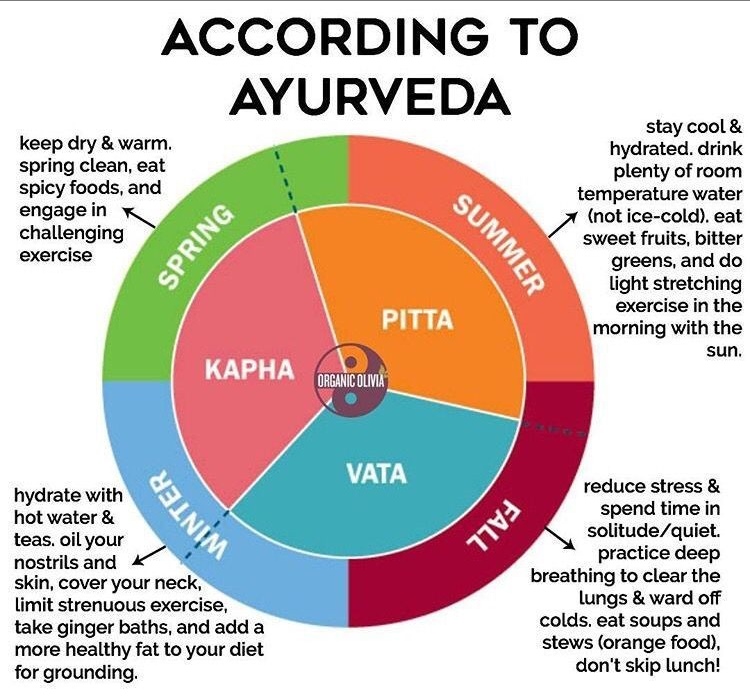
what is VATA, PITTA, KAPHA? Aware about world
It's important to know that each of us has all three doshas in our constitutions: vata, pitta, and kapha. But the ratio between them—the specific quantitative and qualitative relationship between the three—is entirely unique to you. That said, as a pitta-kapha type, your constitution is predominated by pitta and kapha, and you probably have a lot in common with other pitta-kapha types.

Overview of Ayurvedic Doshas Vata, Pitta & Kapha Visual.ly
Vata, Ayurveda's Air. A simple way to think of the doshas is that they align with the primary elements of ancient philosophy. Vata aligns with the element of air. People for whom vata is dominant tend toward feeling cold and have more energy. Often they'll have active, quite possibly intellectual minds with a lighter frame and a tendency to.
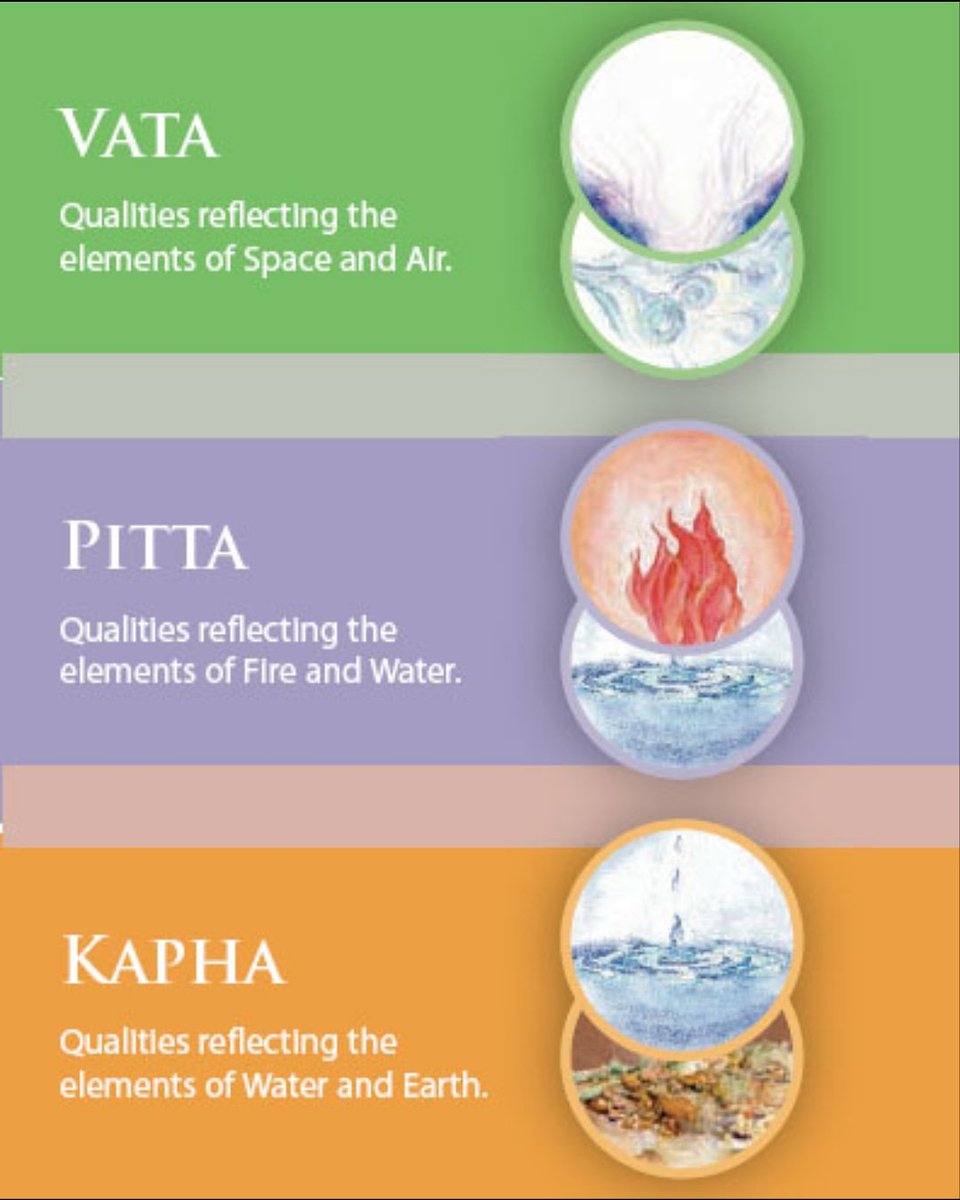
Vata Pitta Kapha Test Amrutam
Vata Is Light; Kapha Is Heavy. Lightness often manifests as a thin or lanky physique, access to creativity, and well-developed spirituality. In excess, it can cause a flighty ungroundedness, lack of emotional security, insomnia, deteriorating bones or muscles, and the condition of being underweight. The heavy quality provides substance, lending.